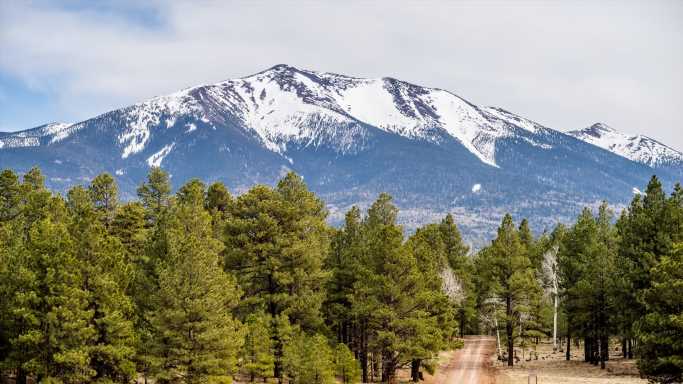The Highest Point In Every State
Made up of 9 climate regions, the United States is one of the most geographically diverse nations in the world. The U.S. is home to both the tallest land-based mountain when measured from base to summit: Mt. Denali in Alaska. It is also home to places like Death Valley, CA, which at 282 ft. below sea level, is one of the lowest places on earth.
To determine the highest point in every state, 24/7 Tempo used data from the U.S. Census Bureau’s Statistical Abstract of the United States. The highest peaks range in elevation from just 345 feet in Florida to 20,320 feet in Alaska. Outdoor recreation consumer spending figures came from the Bureau of Economic Analysis and are for 2020. Conventional outdoor recreation activities (such as camping, hiking, boating, and hunting); other core activities.
In general, the tallest mountains are in the West. The nation’s 15 tallest peaks are all west of the 100th Meridian, or the 100° W longitude line that marks the eastern boundary of the Great Plains.
States with higher elevations often generate more revenue from outdoor tourism, when adjusted for population, and have greater access to opportunities for physical activity. All 10 of the states with the highest average elevations generate more revenue per capita from outdoor recreation tourism than the national average. (This is the largest employer in every state.)
According to the trade organization Outdoor Industry Association, the U.S. outdoor recreation economy generates $862 billion in consumer spending annually and directly supports 4.5 billion jobs.
The states with the tallest mountains are not necessarily the highest states above sea level. While the summit of Washington’s Mount Rainier reaches 14,411 feet, the fourth highest peak of any state, the average elevation of the state is 1,700 feet, approximately 70% of the national average elevation of 2,500 feet. The state with the highest average elevation is Colorado, which stands at 6,800 feet above sea level. (these are the tallest mountains in the world.)
Some states also have more topographic diversity than others. While California has the second highest peak of any state, it also has the lowest elevation in the country. Situated 282 feet below sea level, Death Valley is the lowest point in both California and the United States. The difference between California’s 14,494-foot peak atop Mount Whitney and its Death Valley trough is nearly 3 miles. Meanwhile, in flatter states such as Florida and Delaware, the difference between the highest and lowest point is less than 500 feet.
Click here to see the highest point in every state.
Sponsored: Tips for Investing
A financial advisor can help you understand the advantages and disadvantages of investment properties. Finding a qualified financial advisor doesn’t have to be hard. SmartAsset’s free tool matches you with up to three financial advisors who serve your area, and you can interview your advisor matches at no cost to decide which one is right for you. If you’re ready to find an advisor who can help you achieve your financial goals, get started now.
Investing in real estate can diversify your portfolio. But expanding your horizons may add additional costs. If you’re an investor looking to minimize expenses, consider checking out online brokerages. They often offer low investment fees, helping you maximize your profit.
Source: Read Full Article



